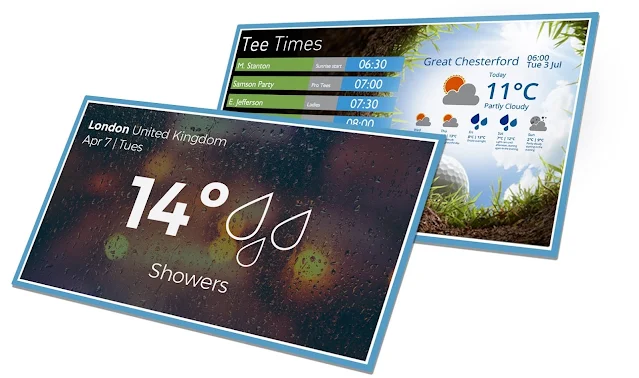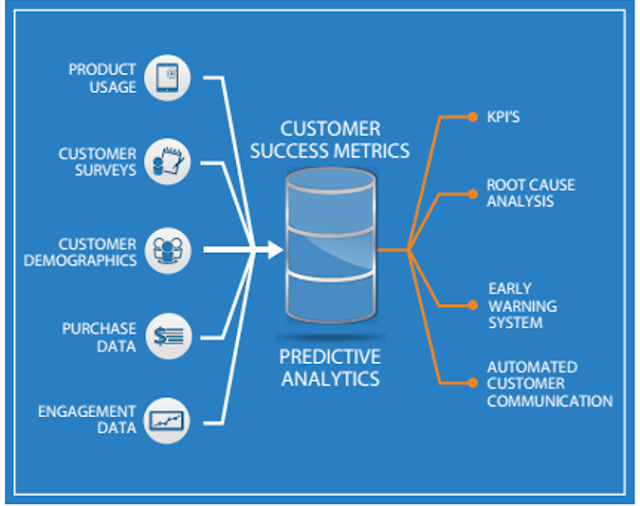Ad Code
Translate
List of 6,000+ Dofollow Commentluv Blogs FREE (Updated 2025)
What is Ozempic (semaglutide)? (Updated in 2025)
How To Find Suitable Properties In Cyprus? (Updated in 2025)
Smart strategies for trading on crypto exchanges
Outstanding Digital Signage Software Tools to Use
In truth, no tools listed in this article will knock your socks off. Despite digital signage software being on the cutting edge of interactive communications technology, the fact is that their tools are not breaking new ground. Yet, every tool listed in this article is outstanding for one simple reason: twenty years ago, they were either unfeasibly challenging to create or required a team of engineers to recreate their functions. In short, there are a lot of very sophisticated tools in the digital signage industry that we all take for granted because we forget how far we have come in the last twenty years. You must visit https://kitcast.tv/ page to learn more about digital signage software for Apple TV.
The Ability To Command Your Digital Signs From Anywhere
These days, we are used to tools that allow us to work remotely, so it is probably no surprise that one of the best things about modern digital signage tools is that you can use them worldwide. Connecting to your signs via the Internet is no longer a novelty; it is now a staple of the entire industry.
Plus, thanks to better Internet connections and far more technologically advanced servers, people cannate the same chunks of information between hundreds of digital signs all around worldwide. Remotely controlling your digital signs may seem a little old hat these days, but as recently as twenty years ago, such tools would have been revolutionary.
Pre-Made and Partially Made Templates
The web design industry taught us that templates can achieve a lot. Thanks to better design interfaces and streamlined drag-and-drop systems, people can easily use templates to build excellent-looking digital sign content.
 |
Digital Sign Content |
Moreover, the partially-made template is becoming more popular because people are warming to the idea of deeper customization regarding their digital content. In the bad old days, design tools made your content look like it was created by a High Schooler for his or her show-and-tell project. But, these days, even a rudimentary understanding of the design tools available allows people to customize templates to create very professionally looking digital sign content.
Manual and Automated Playlists
As you would expect, most digital signage software has a playlist function. However, modern digital signage software allows automated and manual playlist playlists. You can set the manual ones running yourself. For example, you may have a different playlist that runs for each day.
Alternatively, based on external signals, you can set a playlist to run automatically. For example, if sales are going well, e-sign displays adverts that are more brand-building than overtly promotional.
Interactive Content Monitoring
Again, it will come as no surprise that metrics measurement is now a highly sought-after tool in the digital signage software. We have been spoiled by the likes of Google, who offer us online metrics for our websites without us having to pay for them. We now demand similar things to our digital signage software.
Even the most essential software allows you to track several metrics, especially if the signs are interactive. Data collection is straightforward, so it is up to the signage software provider to offer the raw data and/or offer the tools to manipulate and interpret the data with a separate set of tools. Nevertheless, monitoring and interpretation tools are very sought these days because they help digital sign owners understand their users better.
Quick Setup Tools
We all expect a quick installation, immediate compatibility, and minimal setup. The exemplary digital sign software producers offer the relevant setup and compatibility tools as standard, so they hardly seem outstanding. Yet, remember that just a decade ago, something as simple as installing a piece of software on Windows was still tricky. Go back even further, and you need an engineer just to wire up your CCTV security system when these days, almost every camera security system has a plug-and-play function.
Make sure to mistake something being expected for something not being outstanding. The truth is that most digital signage software can be used and played on most operating systems, from the classic desktop MacOS and Windows to mobile operating systems like Android and Apple OS. Yet, this achievement alone is outstanding when you consider how difficult this all used to be just a decade ago.
Digital Signage Security Tools
The quality of modern security tools varies wildly from one software producer to another. Though this seems terrible, it isn't a big concern. In most cases, the information transmitted is promotional, and hackers gain very little from getting into the system unless they want to cause a little mischief.
Some digital signage software has robust security, but these pieces are usually the types you see in large corporate buildings or call centers. They often have potent security tools because even though the information being conveyed and transmitted is not sensitive, it can still give hackers an edge if they are looking to conduct system attacks or even trying to find weaknesses in the rest of the system. Modern security tools, mainly encryption functions, are very impressive.
Cloud Storage Tools
If you want to control your digital signs remotely, it makes sense to store much of the required content on the Cloud. The Cloud storage tools also come with the standard local and various backup tools. Backup tools are convenient these days, both on and off the Cloud. They make up a big part of many businesses' disaster recovery plans and help companies guard against ransomware attacks. Also, remember that saving in multiple locations helps protect your content; the same content you may have paid designers a lot of money to produce.
Collaborative Tools
By simply installing the software and giving out passwords, you can have a whole team collaborate on every part of the content production and publishing process. What's more, thanks to customizable permissions tools, you can ensure that the right people do the right job and guard against malcontented or incompetent employees publishing content that is not ready or suitable for public viewing. Also, since the tools can be used remotely, you can collaborate overseas, which is very useful for people who want their content translated into the local language.
Conclusion - Years of Progress Making Things More Simple
The digital signage industry has helped to prove a point made in the 1993 movie "Demolition Man." As Stallone and Bullock sit in an auto-driving car, she states that the future is made up of sophisticated technology sitting behind the outward appearance of simplicity.
The same is true of digital signage software tools. They may look simple when you compare them to what we are used to today, but just twenty years ago, the tools we take for granted now were not only a pipe dream, but many of them were also considered too unfeasible to try. The tools in this list may not be winning any prizes in innovation, but if you think they are not outstanding, look back at what we used to have and be thankful you are living in today's modern era.



0 Comments